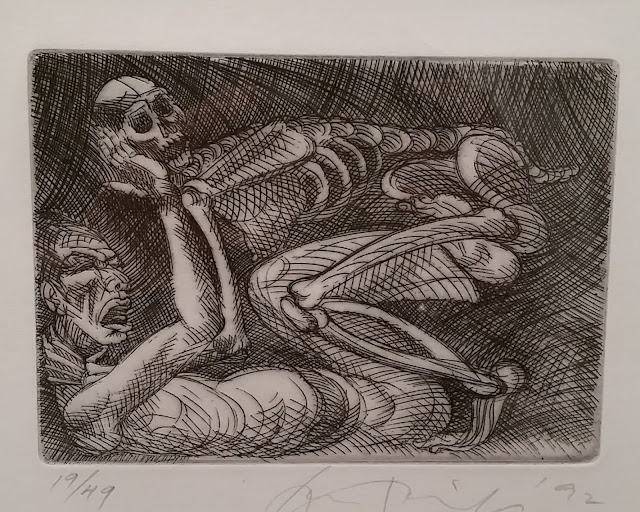The second print I noticed during my recent visit to the Tucson Museum of Art was this 1992 etching by artist Luis Alfonso Jimenez (1940-2006). He was born in El Paso, Texas, and lived in New Mexico, and his work is in the Smithsonian Collection of American Art. I liked this print because, although he was mainly a sculptor, this print has the classic skeleton character that one sees in a lot of Mexican printmaking, particularly woodcuts and linocuts.
Very weird fact about his demise: he was moving a piece of sculpture out of his studio so that it could be installed at Denver Airport. The large piece fell on him, pinning his leg, and he died from traumatic injuries the same day. Talk about dying for one's art...
